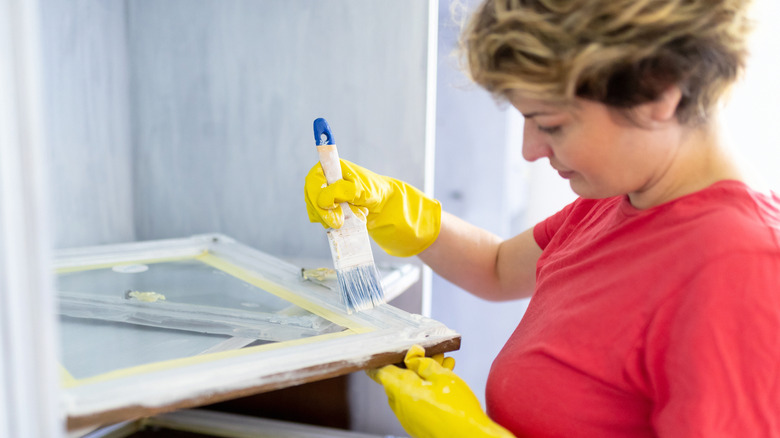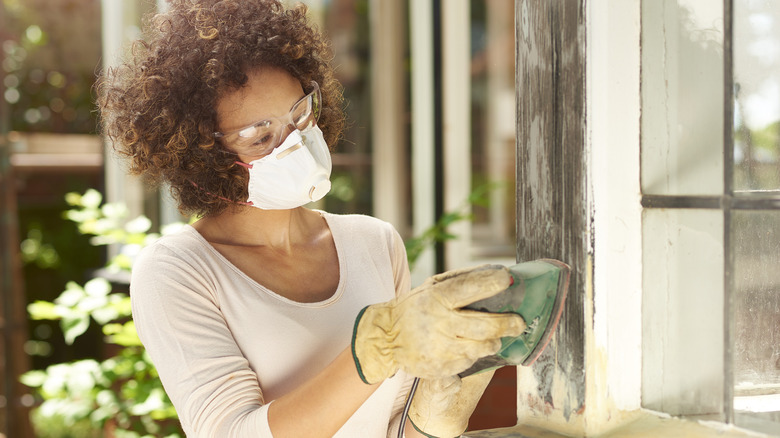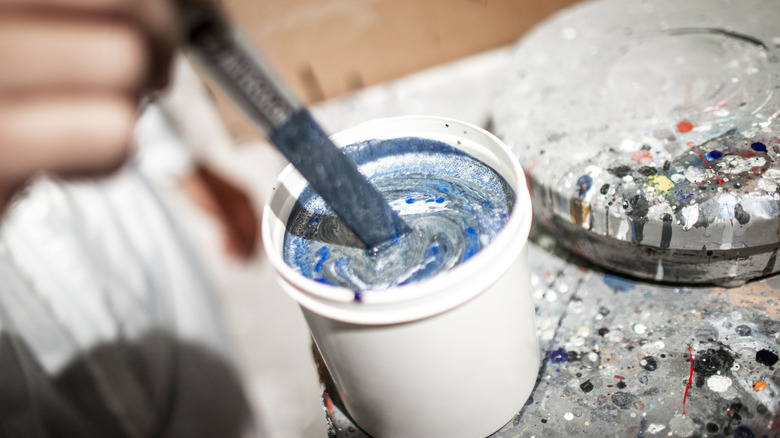Your Sign To Use Milk Paint On Your Vintage Window Frames
If you're looking for a natural, eco-friendly way to paint your vintage window frames look no further than...the dairy aisle? Okay, so you won't actually find milk paint at your local grocery store, but traditionally, this ancient powdery paint product is made from 100% natural ingredients including milk protein, lime, and clay. Moreover, milk paint contains no volatile organic compounds (VOCs), making it a great option if you worry about air quality or you want to get the kids involved in your window painting project. Milk paint is an excellent choice for vintage frames in particular because it naturally mimics the look of old paint, adding to the vintage aesthetic without having to DIY a distressed painted look.
Although you can certainly add top coat to your finish your milk paint, skipping this step will encourage the paint to chip slightly, enhancing the vintage, distressed aesthetic. So whether you're painting window frames that are still in use or are seeking beautiful ways to repurpose old windows into home decor, milk paint is the way to go. Outside of achieving a certain look, milk paint also boasts a handful of additional benefits that make it fun and easy to work with.
Milk paint gives an easy vintage finish
The natural ingredients found in milk paint are not only better for you, but better for the environment as well. Additionally, milk paint holds up well outdoors, making it ideal for your exterior window frames and other outdoor projects. Some the earliest uses of milk paint were outdoors including ancient cave drawings which have clearly stood the test of time.The paint is also naturally UV-resistant, so you can rest easy knowing your outdoor painting projects are protected from the sun.
One of the main benefits of milk paint include its ability to adhere to a great selection of surfaces such as wood, glass, metal, masonry, plastic, drywall, and plaster. The paint is known to go on easy, dry fast, and works well without priming or sanding in most cases. For tricky surfaces, or to ensure the best possible results, you may want to mix in a bonding agent first.
After mixing, the paint application process doesn't differ much from traditional painting techniques. You can choose to prime your vintage windows or apply directly to the frame. When painting window frames, make sure to use painters tape to cover the glass before you begin. Painters tape is also helpful when you want to paint a window without painting it shut.
Customize your results with milk paint techniques
Milk paint commonly comes in powder form and is available in a decent color range. When working with a powder-base you will first need to mix the paint using a 1-1 ratio of milk paint powder and water. The consistency should resemble heavy cream when finished. Remember to mix well to avoid any clumps. If you're looking to expand the color options, try experimenting with creating custom colors. You can lighten and darken any paint color by adding in white or black paint to your base. Alternatively, experiment with creating new colors by mixing primary colors. For example red and blue together will make purple, blue and yellow will make green, and so on. Just be sure to mix the colors while they're still in powder form to yield the best results.
In addition to color mixing, you can also try different techniques to give your milk paint a certain finish. For example, if you want your vintage frames to have a rustic farmhouse look, try using tape on dry paint to intentionally peel the paint in select areas. Similar to chipping, applying heat from a hair dryer can produce a beautiful crackle effect to your milk paint. Finally, you can use various finishes to slightly alter the final look of your milk-painted window frames. For example, wax, finishing oil, and varnish will give the final product a satin-like finish.


